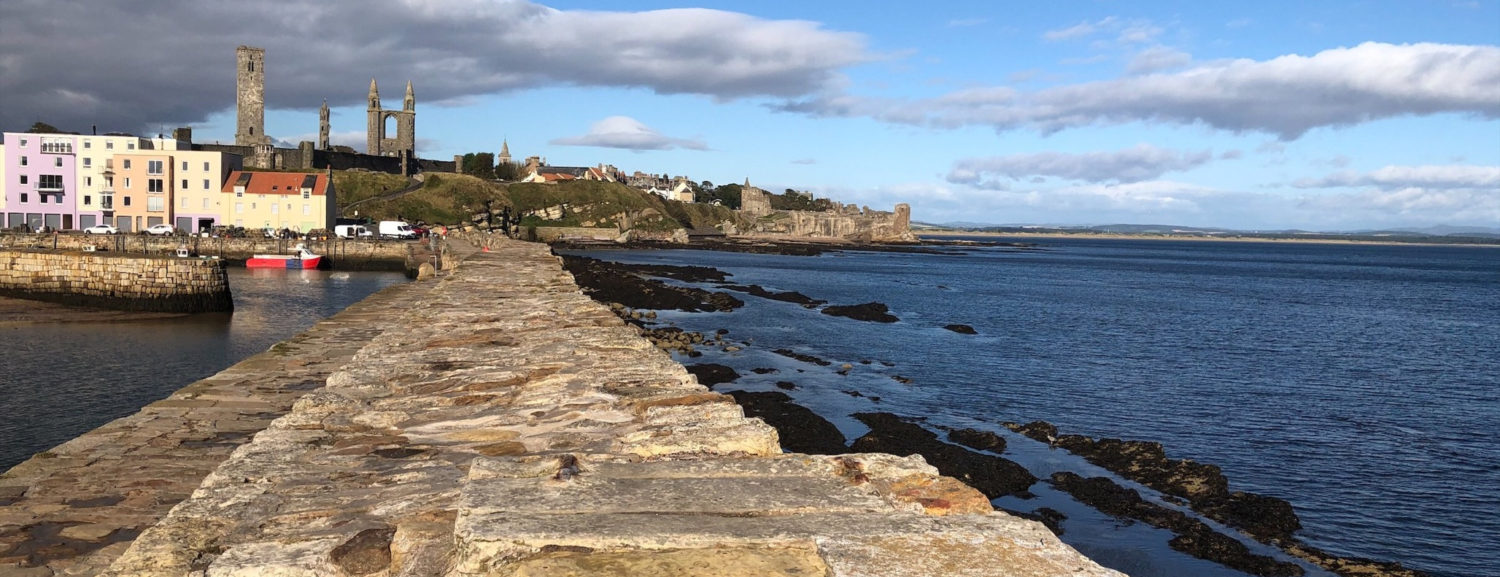So’gait port (South Street), now called West Port (the Lowland Scots word for a town gate), is one of few surviving town “Ports”, and the only medieval town port surviving in its original location in Scotland and is a scheduled monument. It was built by Thomas Robertson at around 1587. Its design is based on that of the Netherbow in Edinburgh, which itself was modelled on Paris’ Porte Saint-Honore.
The West Port consists of:-
- An 11 and a half feet wide central rounded archway, set between two semi-octagonal gun-looped turrets and smaller archways of modern construction.
- A central rounded, arched pend
- The towers and arch are capped with a corbelled parapet, punctured by imitation cannon water-spouts
- The ‘battling’ is confined to the central portion.
- The saltire flag normally flies from the parapet.
It was allowed to fall into decay and was comprehensively restored in 1843 by the Provost and John Grant of Kilgraston who removed a large buttress and substituted several small ones. He also added a plaque with the city coat of arms, two side arches flanking the central arch, a stone panel on the east containing the city arms, and a modern carved relief panel depicting David I on horseback.
The West Port sits at the lower end of one of the towns’ three premier streets. The view from the west shows us its impressive monumental quality while the view from the east forms a natural boundary to the town’s historic core.
St Andrews was never a walled city in a defensive sense, and the gate was more a symbol of civic pride than it was a fortification. It is still in use for passage, and thus preserves some of the aesthetic effect of an archway. However, being within the burgh rather than at the edge robs it of its aesthetic as an entrance-way. The West Port remains a notable structure, contributing positively to the historic fabric of Scotland’s oldest university town.
- University Photo Collections
- Overview on the West Port
- https://www.britainexpress.com/attractions.htm?attraction=4786
- https://canmore.org.uk/site/34289/st-andrews-west-port
- https://www.historicenvironment.scot/visit-a-place/places/west-port-st-andrews/history/
- Fife, Perthshire and Angus by Walker and Ritchie
- Kingdom of Fife by Pride
